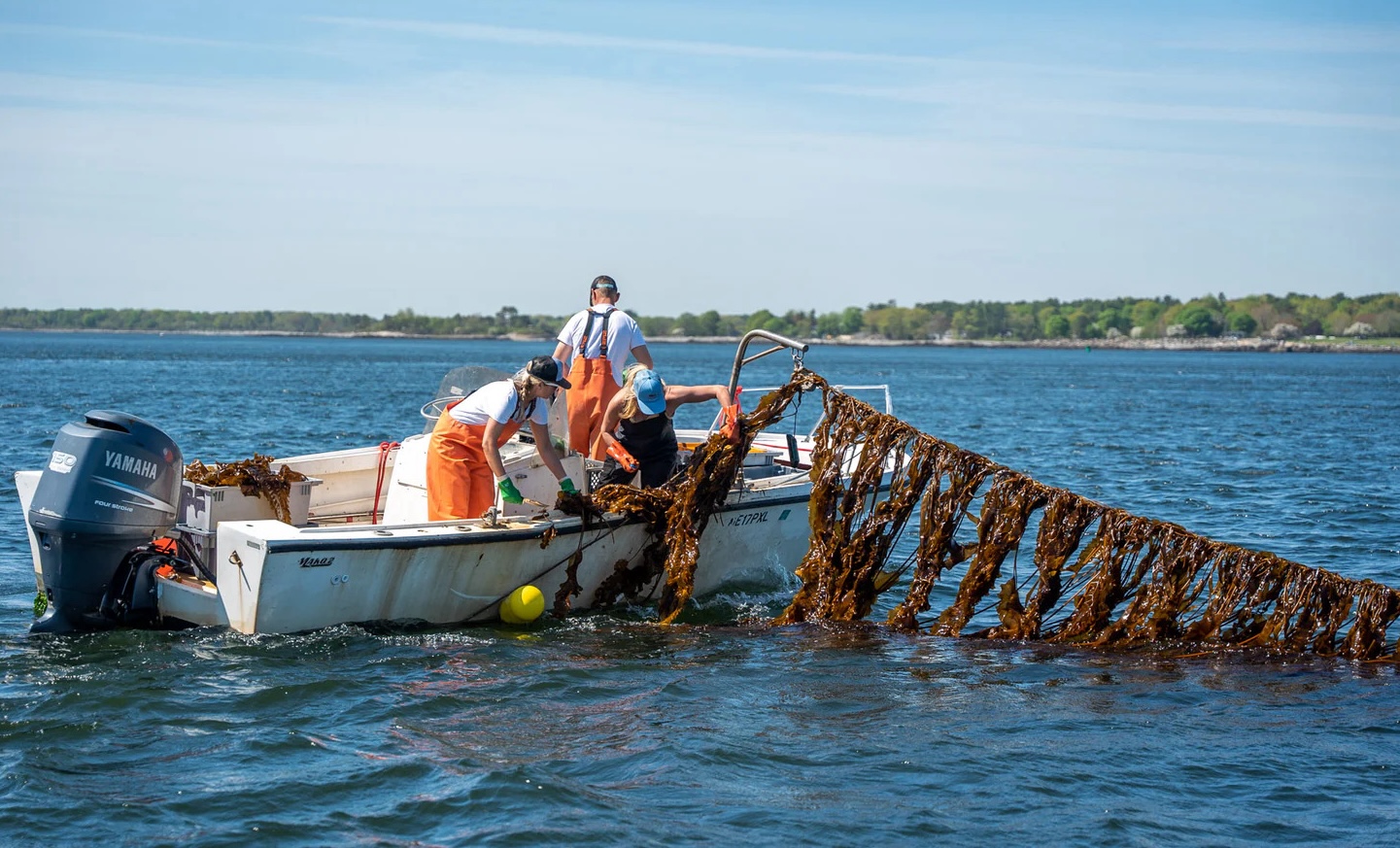NORTH STARS:
Water Management
Wildlife & Ecosystems
Production & Consumption
“Growing seaweed is regenerative, meaning it actually improves the waters of the marine environment in which it grows.”
In the cold, clean waters off Maine’s coast, a quiet beauty revolution is taking place. While seaweed has been making headlines for its potential to reduce methane emissions in cattle and create sustainable food products and bioplastics, innovative companies are discovering another valuable use for this marine resource: beauty products that are both effective and environmentally regenerative.
“Algae has been around for over a billion years,” says Krista Rosen of Cold Current Kelp, a woman-owned kelp farm and skincare company in Maine. “It has developed these secondary metabolites that allow it to deal with extreme conditions in which it lives.”
The Role of Kelp in Beauty
These same compounds that help seaweed thrive in harsh ocean conditions — facing everything from intense UV radiation to temperature fluctuations — turn out to be remarkably beneficial for human skin. What makes seaweed particularly special in the beauty space is its unique molecular composition and rich concentration of bioactive compounds..
“There are some compounds that are only found in marine ingredients that you would not find in terrestrial grown plants,” says Rosen, adding that one such compound is fucoidan, a polysaccharide with impressive anti-aging and antioxidant properties that also provides hydration benefits.
The environmental footprint of seaweed cultivation stands in contrast to traditional beauty ingredient sources. While many terrestrial plants used in skincare require significant resources — including freshwater, arable land, and often pesticides — seaweed farming is radically sustainable. More than that, it’s regenerative, actively improving the marine environment as it grows.
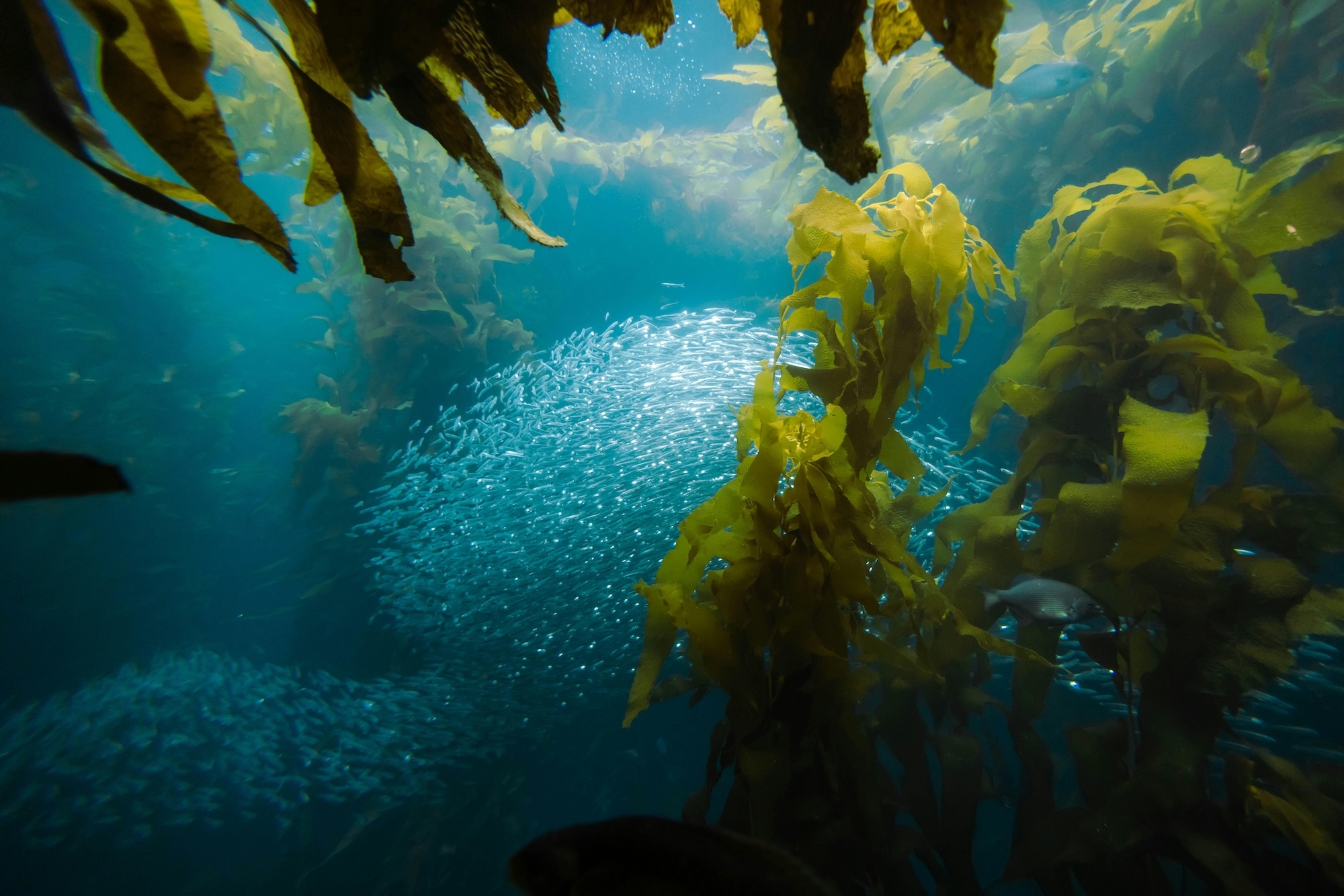
Kelp and fish. Courtesy of Pexels
Cleaning Up While Growing Up
“Growing seaweed is regenerative, meaning it actually improves the waters of the marine environment in which it grows,” says Rosen. “It can improve its marine environment by absorbing excess nitrogen and carbon from the water. It can provide habitat to marine life, protect from storms and climate damage, and de-acidify the ocean,” she adds.
This environmental benefit is particularly crucial in places like the Gulf of Maine. The Gulf is warming faster than 99% of the world’s oceans, says Kiera Foti of Atlantic Sea Farms, another woman-owned kelp operation in Maine. The first commercial seaweed farm in the U.S., the company has pioneered a model that not only produces high-quality seaweed but also helps fishing communities adapt to changing conditions. Lobster fishermen, for instance, are supplementing their income by growing kelp in the off-season, providing them additional revenue.
This emergence of domestic seaweed farming represents a significant shift in an industry traditionally dominated by Asian producers. “About 98% of the seaweed is fully imported and very untraceable,” Foti says. “It’s hard to know even geographically where it’s grown.”
This lack of traceability has created an opportunity for American producers to differentiate themselves. Cold Current Kelp, for instance, started when marine biologists Inga Potter and Rosen joined forces after realizing the potential of domestic kelp farming. Their approach focuses on transparency and quality, with their farming operations visible right off Maine’s coast.
Beyond Maine, Alaska’s commercial fishing industry has embraced the concept, with new farms operating near Ketchikan, Craig, and Kodiak. Alaska law requires farmers to collect local spores from wild kelp within 31 miles of their farm sites. Farmers across the state’s 22 kelp farms primarily cultivate sugar, ribbon, and bull kelp.
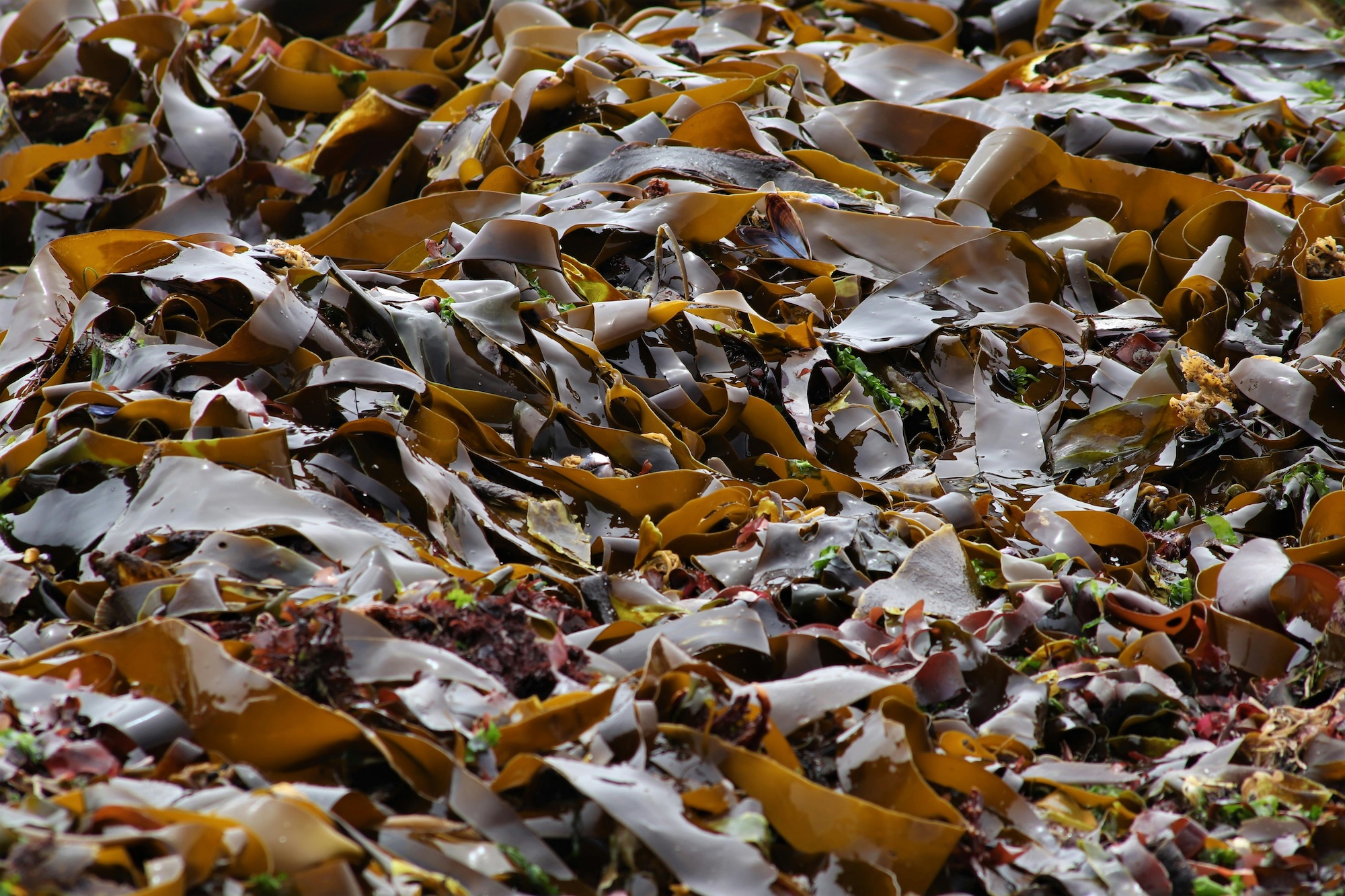
Drying Kelp. Courtesy of Pexels
A Sea Change in Skincare
Packed with vitamins, minerals, antioxidants, and amino acids, seaweed is a skincare powerhouse offering a wealth of benefits including anti-aging, anti-inflammation, reducing redness, improving skin elasticity, and decreasing water loss. Research published in Marine Drugs (2021) by López-Hortas show that seaweed’s polysaccharides act as powerful humectants, creating a protective barrier that locks in moisture and improves skin texture. Additionally, compounds like fucoidan and phlorotannins provide significant anti-inflammatory properties, helping to calm irritated skin and reduce redness by inhibiting pro-inflammatory enzymes.
“It deeply hydrates the skin, boosts collagen production, and improves elasticity, making it an excellent ingredient for anti-aging products,” says Michele Gilfoil, founder of the skin and beauty company Planet Botanicals. “Fucoidan plays a dual role here as well, stimulating collagen production and improving skin elasticity, which helps reduce the appearance of fine lines and wrinkles. Additionally, vitamins A, C, and E, naturally found in seaweed, protect the skin from environmental damage, support cell turnover, and promote a youthful glow.”
This makes kelp particularly effective in addressing multiple skincare concerns.
Planet Botanicals’ products like the Seaweed Foaming Body Scrub — made with walnut shell powder and Maine Rockweed seaweed harvested by hand in the waters of Kettle Cove — and the Seaweed Dream Cream — recommended for sensitive skin — all utilize natural ingredients that include Maine kelp. Companies like Macro Oceans use Alaskan kelp to produce high-performance biomaterials like its Big Kelp Hydration, which claims an 80% increase in hydration and 26% immediate skin barrier improvement compared to placebos.
Seaweed seems to be catching on among consumers. Planet Botanicals’ Seaweed Beauty Collection was recognized as a top 10 Indie Beauty Brand at the Indie Beauty Expo in NYC, and Cold Current Kelp now distributes its KelpGlow Facial Oil through major retailers like LL Bean and Sea Bags.

Cold Current Kelp Glow Facial Oil. Courtesy of Cold Current Kelp
A Growing Industry with Growing Pains
Despite the clear benefits, scaling up domestic seaweed production for beauty products presents challenges. Cold Current Kelp maintains an 800-foot line that produces their current supply, but expanding requires navigating complex regulatory processes and developing specialized extraction methods.
“Right now, scaling up is a good question, and something I think about many times a day,” says Rosen. One particular issue involves their proprietary extraction process, which differs from traditional cosmetic manufacturing methods. They’re currently conducting federally funded research on kelp extracts that could allow them to expand beyond oil-based products into creams, moisturizers, serums, and hair care products.
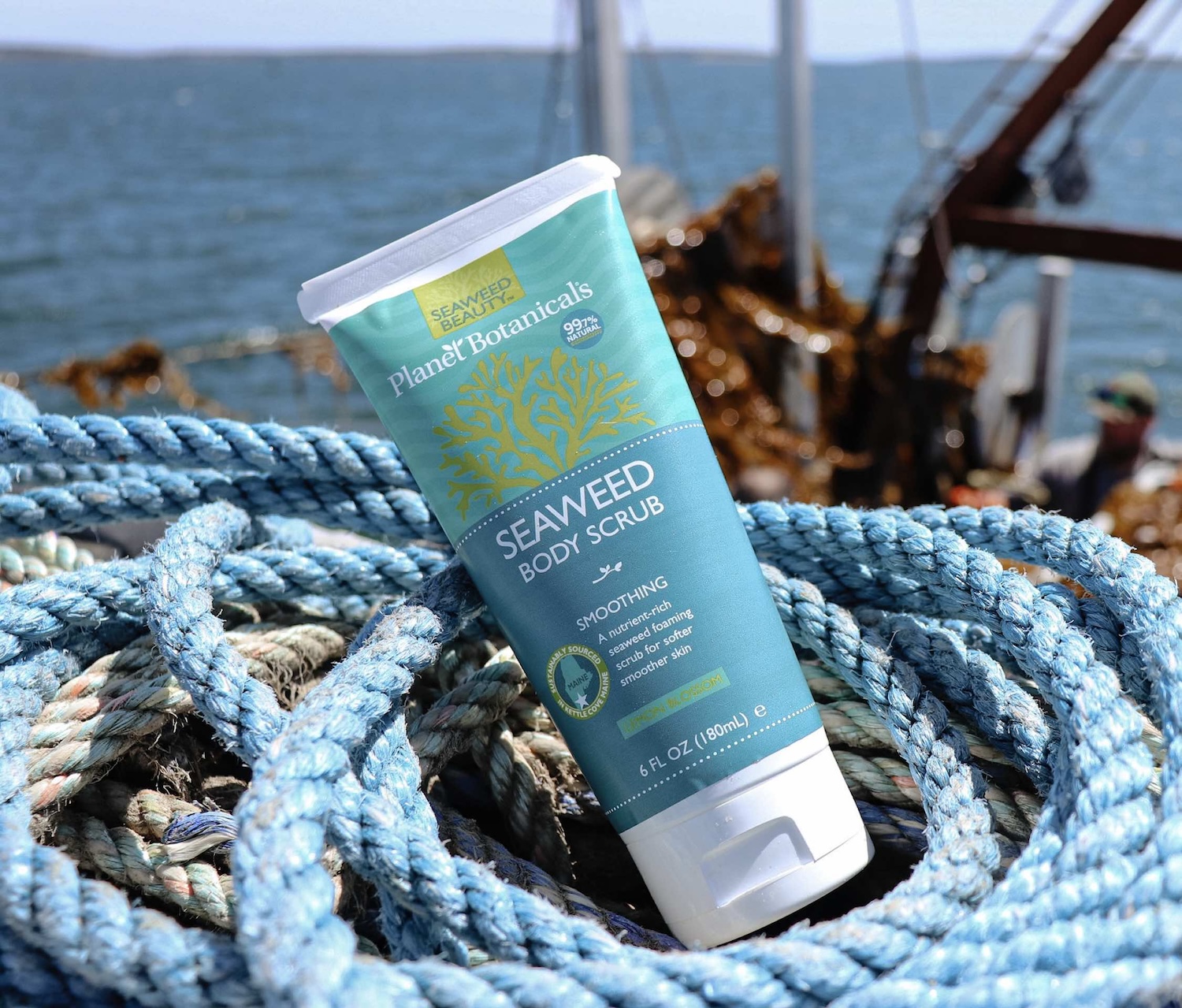
Planet Botanical Body Scrub. Image Courtesy of Planet Botanical
The Future of Marine Beauty
The beauty industry’s interest in seaweed appears to be growing alongside consumer awareness of both environmental issues and ingredient sourcing. This shift in consumer preferences, combined with increasing interest from larger beauty brands in sustainable and traceable ingredients, suggests that domestic seaweed farming could be poised for significant growth.
However, industry leaders emphasize the importance of maintaining sustainable practices and supporting local communities as the sector expands. For example, Macros Oceans has established a fully traceable, zero-waste supply chain, which they say resonates with eco-conscious consumers.
“I think especially with millennials and Gen Z becoming consumers, we’ve seen an interest in prioritizing things that are beneficial for the environment,” Foti says.
With its unique bioactive compounds, minimal environmental impact, and potential to support coastal economies, seaweed might just represent the future of sustainable beauty — proving that sometimes, the best skincare solutions come from working in harmony with nature rather than against it.
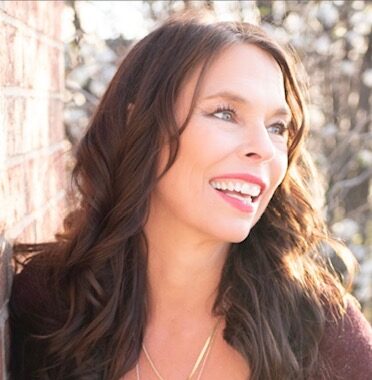
Heide Brandes is an award-winning journalist whose’ work appeared in National Geographic Traveler, The Wall Street Journal, The Smithsonian, Cowboys & Indians, Southern Living, Fodors, BBC Travel, ROVA, Outdoor x 4 Magazine and The Washington Post, and others. When not traveling and writing, Heide is an avid hiker, a medieval recreation enthusiast, a professional belly dancer and kind of a quirky chick from Oklahoma. Follow Heide on IG @heidewrite.


